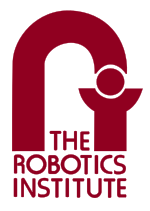Robotics_Institute
Robotics Institute
Division of the School of Computer Science at Carnegie Mellon University
The Robotics Institute (RI) is a division of the School of Computer Science at Carnegie Mellon University in Pittsburgh, Pennsylvania, United States. A June 2014, the article in Robotics Business Review magazine calls it "the world's best robotics research facility" and a "pacesetter in robotics research and education."[1]
This article has multiple issues. Please help improve it or discuss these issues on the talk page. (Learn how and when to remove these template messages)
|
The Robotics Institute focuses on bringing robotics into everyday activities. Its faculty members and graduate students examine a variety of fields, including space robotics, medical robotics, industrial systems, computer vision and artificial intelligence, and they develop a broad array of robotics systems and capabilities.[1]
Established in 1979 by Raj Reddy,[2] the RI was the first robotics department at any U.S. university.[3] In 1988, CMU became the first university in the world offering a Ph.D. in Robotics.
In 2012, the faculty, staff, students and postdocs numbered over 500,[3] and the RI annual budget exceeded $65M,[3] making the RI one of the largest robotics research organizations in the world.[4]
The RI occupies facilities on the Carnegie Mellon main campus as well as in the Lawrenceville and Hazelwood neighborhoods of Pittsburgh, totaling almost 200,000 sq. ft of indoor space and 40 acres of outdoor test facilities.
